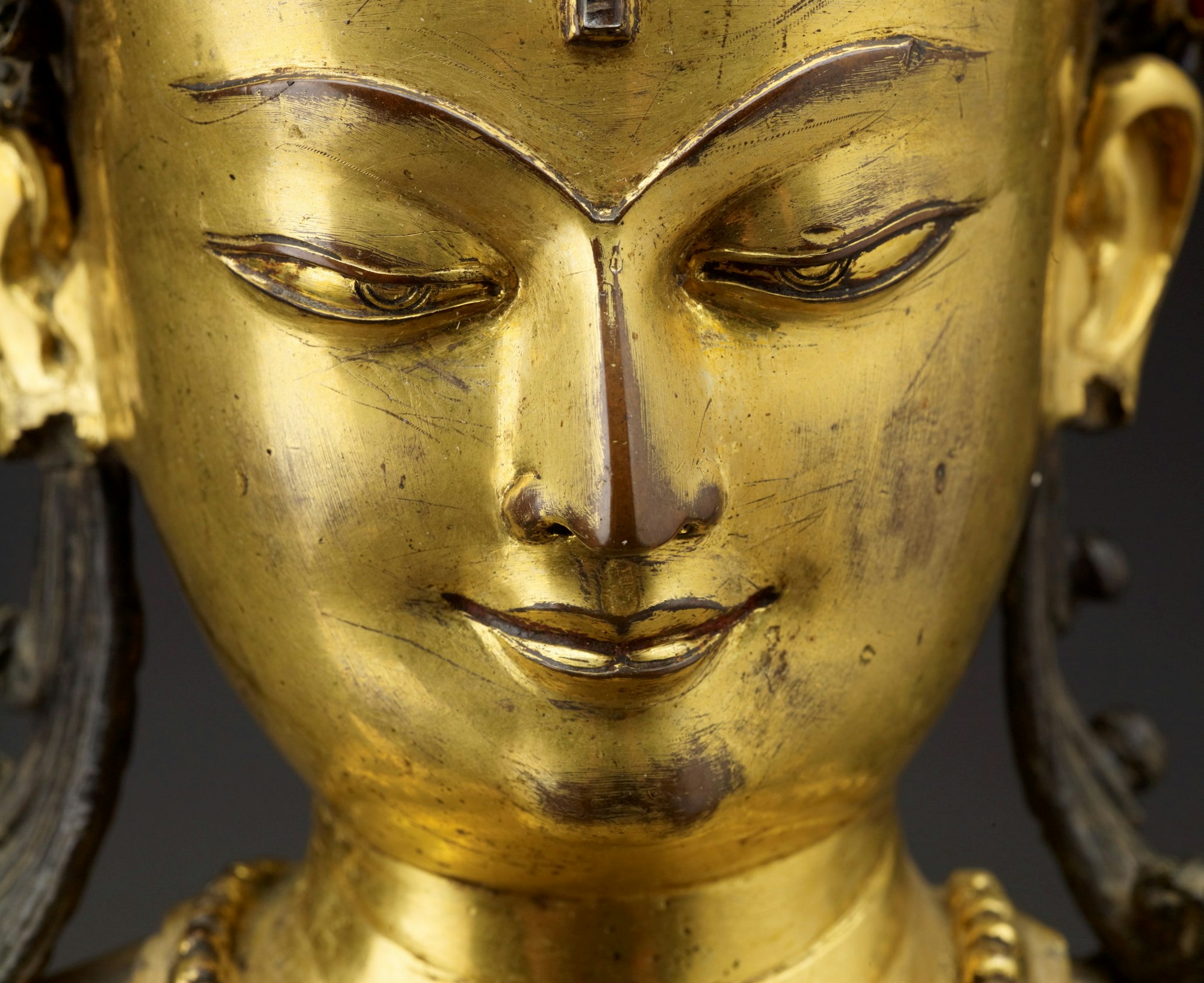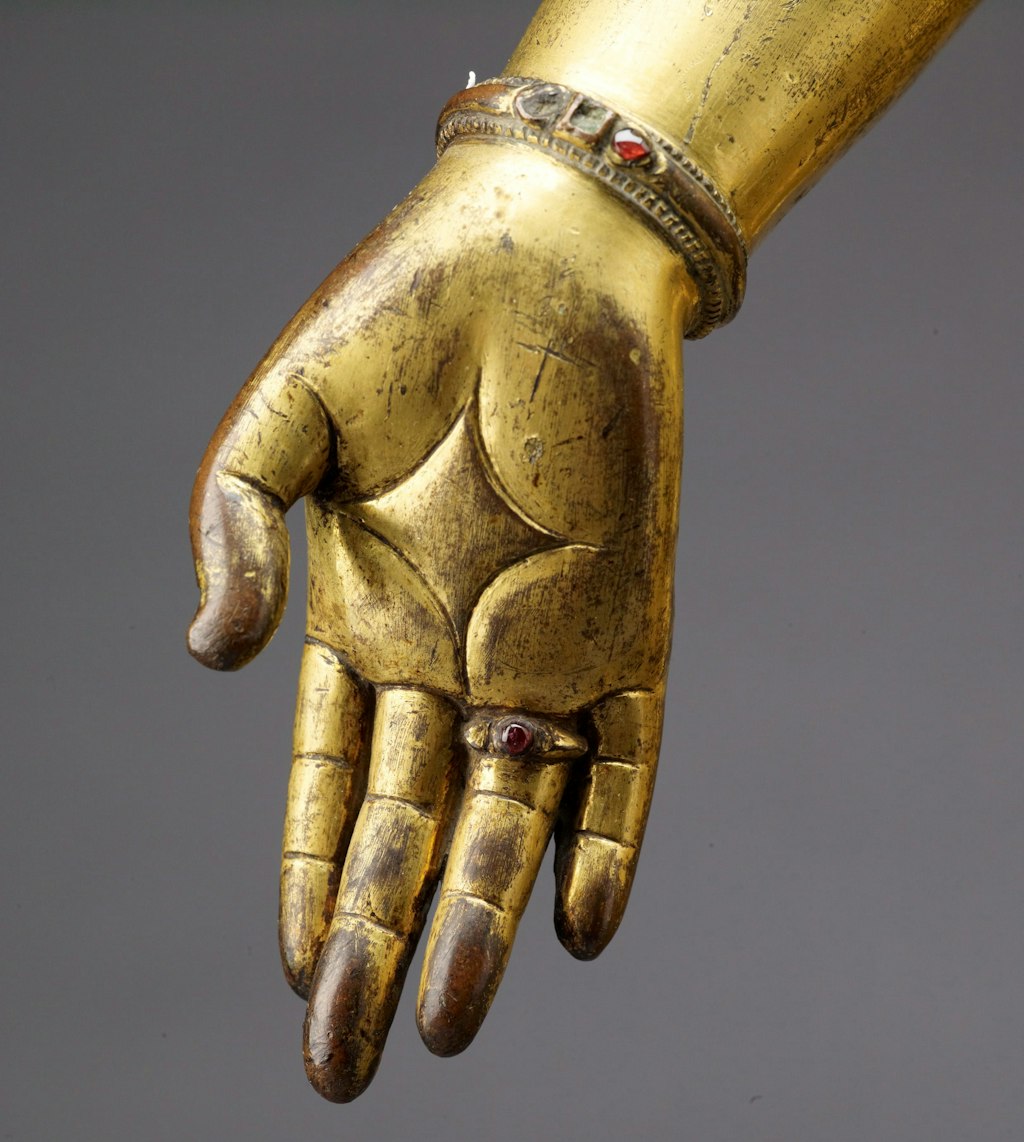Bodhisattvas of Compassion

The gentle face of the Gallery’s Padmapani
The month of April is a particularly significant one for people of faith. This year, the Jewish festival of Passover falls within it, as does Christian Easter and the start of Ramadan, Islam’s holy month of fasting.
These festivals are important expressions of cultural identity, and many people feel a deep sense of loss that they will not be celebrated communally in 2020.
Much art has come out of a place of creativity within the world’s great religious traditions. Over the next four weeks I will be marking these holy days by choosing a work from the Art Gallery of New South Wales collection that particularly speaks to me of these celebrations.
![[w:117.2010[Padmapani]], Kathmandu Valley, Nepal, c13th century, Art Gallery of New South Wales](https://www.datocms-assets.com/42890/1633079299-117-2010-mm.jpg?fit=clip&iptc=allow&w=1024)
Padmapani, Kathmandu Valley, Nepal, c13th century, Art Gallery of New South Wales
In many parts of Asia, today (8 April) is the celebration of the birth of Buddha. It is a joyful festival, occurring at the beginning of spring in the northern hemisphere, and is popularly known as the ‘flower festival’ in Japan.
I once stayed near the Sensō-ji temple in Tokyo and witnessed the thousands of pilgrims who came to pour sweet hydrangea tea over the small statue of the Buddha in the temple grounds on this day.
The Sensō-ji temple is dedicated to the Kannon Bosatsu, the Bodhisattva of Compassion. This Bodhisattva is called by various names throughout Asia, including Padmapani, the Lotus-Bearer. The Gallery’s statue of Padmapani probably dates from the 13th century and comes from the Kathmandu Valley in Nepal.

In these frightening times, it seems to me that the idea of a Bodhisattva has particular resonance, even for those who are sceptical of the traditional spiritual understanding of this role.
Bodhisattvas are those who, due to their great compassion, forgo their own personal nirvana to lead others there. The hands and eyes of the Gallery’s Padmapani symbolise his compassion; they see where there is suffering and take action to attend to it. (I use ‘his’ carefully, for the figure is barely gendered, almost androgynous. In art, the Bodhisattva of Compassion is depicted in both male and female forms.)
Our Padmapani’s right hand is held in the gesture of wish-granting, with a diamond incised in the out-turned palm. It is a particularly beautiful hand, that of a being who is both even-handed and open-handed. The gentle face smiles in a way that a second-century text tells us emanates rays of light that bring warmth and relief to all who suffer.
At this time, I know those rays extend most particularly to those who are selflessly caring for others, to our doctors, nurses and teachers, and to all Bodhisattvas of Compassion wherever they may be.